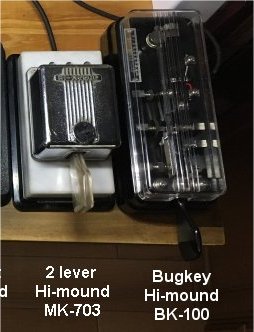I wrote about this here before:
–Morse code is a type of digital communication protocol that takes on three values: no code, short dots, and dashes.–
Its older brother is “Braille,” invented by Louis Braille. This is a two-value, 6-bit digital communication with or without dots. Born in 1825, it is exactly 200 years old this year.
Its younger brother, Morse code, turns 188 years old this year. Both belong to the family of codes that are decoded by humans themselves.

But the difference between these two brothers is that the younger brother is a little more “free”. The younger brother can respond to hearing, vision, and touch. In addition, for the signals are often transmitted over radio waves, he can tolerate imperfections such as “a faint sound” or “only half of the sound can be heard”, even though it is digital.
This is something that the youngest brother, FT8, could never do. (Oops, FT8 cannot be decoded by humans, so in this case, should I call him the “nephew”?) And the younger brother is really good at using “spaces”. When you type “73 TU E E” in print, it sounds a bit dry (I think it would be the same when typed in Braille), but the younger brother expresses a sense of “nostalgia” very well with the spacing of the symbols.
Once upon a time (maybe about 40 years ago?), there was a brilliant bugkey master in JA6 OM who everyone believed was hitting on an electric key until he hit the “final dash” of the “VA” as he said goodbye.
![]()
